Forums:
Our warm weather has moved on some of the spring crocus but comparing them with last year there is little difference in flowering time.
The first two are Crocus biflorus ssp. There has been a move to create numerous new species in this group and these will be two of them.
Crocus biflorus ssp from Turkey Feithye
Crocusbiflorus ssp from Turkey Kahramaranmaras
Crocus biflorus ssp crewii from Turkey Honaz Dag
Crocus nevadensis from Spain Cazorla two forms
Crocus biflorus ssp pulchricolor white form from Turkey Ulu Dag






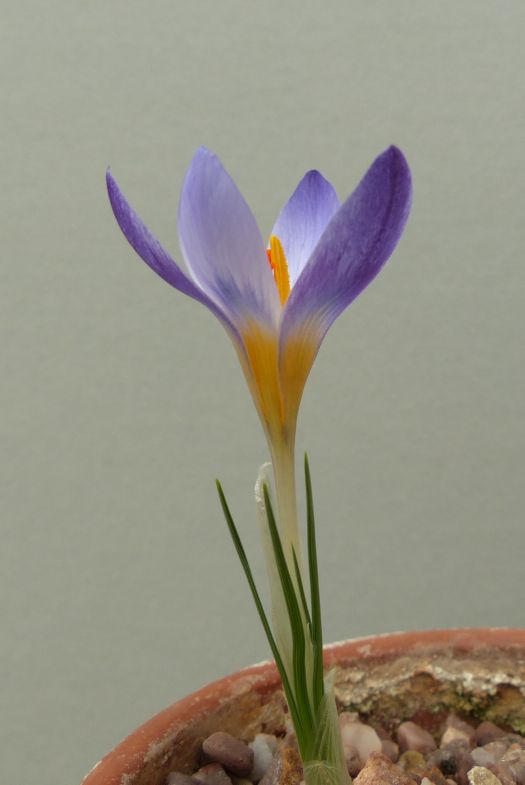

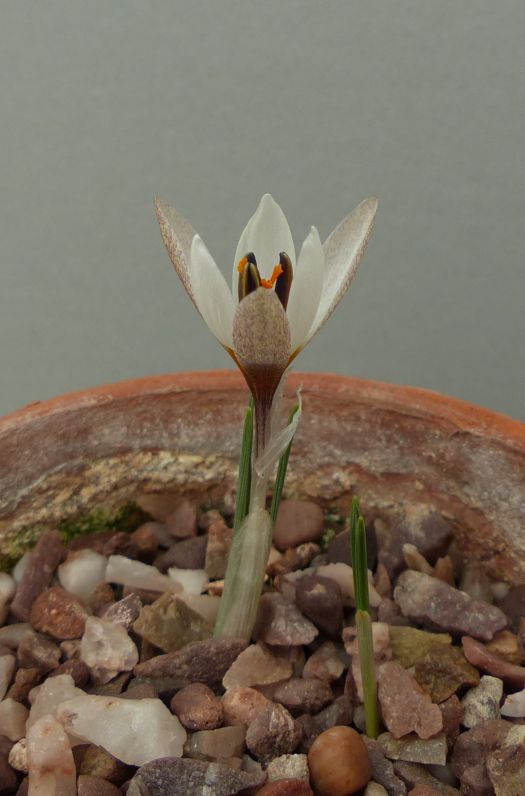
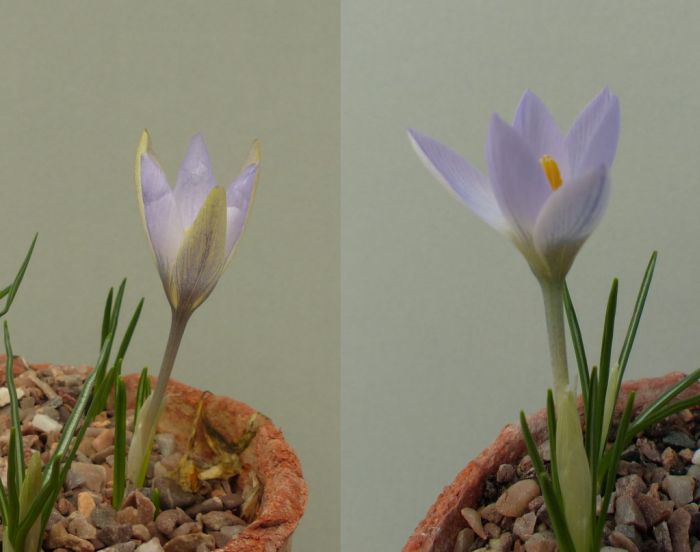

Comments
Tony Willis (not verified)
Four forms of Crocus cyprius
Mon, 01/13/2014 - 11:55amFour forms of Crocus cyprius from the Troodos Mountains, Cyprus
Toole (not verified)
Looks to be some lovely
Fri, 01/17/2014 - 12:43amLooks to be some lovely Crocus there Tony, however I couldn't enlarge the pictures.
Tony Willis (not verified)
I have changed the second
Fri, 01/17/2014 - 8:26amI have changed the second post which is now working but I am afraid when I tried to change the first one it was classed as spam and it was refused.
Trond Hoy
Nice to see some crocuses in
Fri, 01/17/2014 - 11:21amNice to see some crocuses in flower! Mine are still only in leaf (outside). Difficult to walk on the lawn though with all the plants starting to show.
Richard T. Rodich
I'm not sure what's going on
Fri, 01/17/2014 - 1:36pmI'm not sure what's going on with this crazy system.
In your first post, Tony, as a moderator all I did was delete your inserted pics from the text box, and then re-inserted them.
Now they work!
Tony Willis (not verified)
Rick
Mon, 01/20/2014 - 2:29amRick
thank you that is what I did but then it would not let me update my post,never mind, here are a couple more in flower now.
Crocus sieberi from Mt Parnon Greece
Crocus biflorus ssp alexandri from Mt Falackro Greece
Mark McDonough
Tony, you show such exquisite
Mon, 01/20/2014 - 2:51pmTony, you show such exquisite Crocus, I can identify my favorites among the ones you show as nevadensis and cyprius, wonderful variability on the latter.
Tony Willis (not verified)
Mark
Tue, 01/28/2014 - 11:59amMark
thank you,the cyprius are one of my favorites.
Here are a couple more in flower
Crocus pelistericus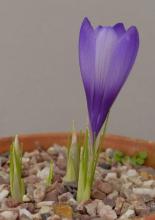
Crocus x gothenburgensis , a cross between C.pelistericus and C. scardicus. This particular one seems very close to C. scardicus.
.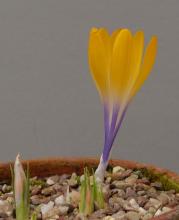
Trond Hoy
I like the colour of that
Thu, 02/13/2014 - 12:14amI like the colour of that gothenburgensis. How is the inside?
Tony Willis (not verified)
A couple more Crocus x
Thu, 02/13/2014 - 11:20amA couple more Crocus x gotoburgensis. The inside is pretty much like the outside,the markings show through.
Trond Hoy
They are pretty!
Sun, 02/16/2014 - 8:56amThey are pretty!
Do you know how they perform outside?
Longma (not verified)
You're really showing us some
Tue, 02/18/2014 - 11:58amYou're really showing us some unique, rare, and very special Crocus sp. Tony. Cheers! Beautifully grown as always,
My thoughts ( for what they are worth ) Trond, are that to succeed in the outside in the garden Crocus x gotoburgensis will need a cool, very free draining, perpetually moist site !!! Given its parents ( C. pelistericus and C. scardicus ) the skill seems to be providing an environment that is moist enough to satisfy the bulbs needs, while not been too wet to cause rot ( which I understand is the main cause of failure amongst potential growers).
ManySome, maybe only a few, people do grow both parents ( usually C. pelistericus ) outside in their gardens though, so it is by no means too ( !!!! ) difficult.Edit - Strike "Many", to remove exaggeration,
Tony Willis (not verified)
Ron an excellent description
Tue, 02/18/2014 - 12:39pmRon an excellent description of the growing conditions however I have yet to meet anybody that does grow either it or its parents outside. My conditions seem to suit them ideally
here is a Crocus sieberi from Mt. Parnassus in Greece.
Trond Hoy
Thank you both.
Tue, 02/18/2014 - 1:24pmThank you both.
Maybe I should try it outside then, my climate is cool and moist and not very cold in winter either!
Although the plants you have shown Tony are well worth growing in pots and admiring on close range I can't have too many pots around.
That sieberi isn't bad either!
Longma (not verified)
Another stunning C. sieberi
Wed, 02/19/2014 - 11:38amAnother stunning C. sieberi Tony. A unique specimen??
I'd be fascinated to know if your conditions suited C. pelistericus and C. scardicus ( and so maybe C x gotoburgensis ) Trond. I fear that your main problem may be getting hold of bulbs or seed in the first place!!. I'm sure that those that show the flowering adults on various websites have managed them for many years
I fear that your main problem may be getting hold of bulbs or seed in the first place!!. I'm sure that those that show the flowering adults on various websites have managed them for many years
Trond Hoy
I looked up both species at
Wed, 02/19/2014 - 1:26pmI looked up both species at the AGS site and according to the description there (cold winters with snow cover etc) the climate at my mountain cabin seems to suite them better! Here at home the winters are usually not cold except for a few days and we get a lot of rain too.
Anyway I'll look for seeds/corms!
Tony Willis (not verified)
Ron
Wed, 02/19/2014 - 1:33pmRon
I think it is a particularly fine one (they all are!!) Nothing beats seeing them by the thousand in the wild though.
Trond
I produce some seed of pelistericus each year and so you are welcome to some of it. i understand it is not possible to send corms to Norway.
Trond Hoy
I would love to have some
Wed, 02/19/2014 - 1:51pmI would love to have some seed, thank you!
I can bring home 3kg bulbs etc without soil from Europe when traveling so a few in a letter shouldn't be problematic. Live plants need a phytosanitary certificate though.
Longma (not verified)
Tony Willis wrote:
Wed, 02/19/2014 - 1:54pm[quote=Tony Willis]
Nothing beats seeing them by the thousand in the wild though.
[/quote]
That must be an amazing experience Tony? When would you recommend the best time to see this, given the vagaries of the weather each year? Are they all identical to this on Mt. Parnassus or was this a special selection? C.sieberi is certainly a most beautiful Crocus sp. in all of its forms!
Tony Willis (not verified)
Ron
Fri, 02/21/2014 - 2:50amRon
I always go the first two weeks in May which has been an ideal time for seeing a lot of different plants. naturally it means missing the early species but timing is always a compromise.
The Crocus sieberi on Parnassus are very variable as they are in all their sites. It is a very common plant on the higher mountains and occurs in large numbers when suited. A large area around the ski resort on Parnassus has now been bulldozed and turned into car parks during the economic boom. The area is now the site of many unfinished houses and other failed developments, unsightly,but this has had little effect on the plant populations which cover many miles of mountainside.
Two pictures of small areas of hillside to illustrate how dense the plants can be. Both are on Kymachalana but the C. sieberi could have been taken in any locations.
Longma (not verified)
Thank you for the information
Fri, 02/21/2014 - 5:27amThank you for the information and wonderful illustrations Tony.
Nothing so spectacular as those you show here, but a few from the garden today.
'Blue Pearl', 'Cream Beauty', 'Tricolor' and 'Prince Claus'.
Trond Hoy
Spring crocuses are always
Tue, 02/25/2014 - 12:09pmSpring crocuses are always welcome - they don't have to be rare or special to be of interest!
Fermi de Sousa
Some autumn flowering crocus
Thu, 04/24/2014 - 5:22amSome autumn flowering crocus in bloom here,
Crocus asumaniae - from seed from NARGS Seedex
Crocus serotinus ssp salzmannii seed from Rafa D. in Spain
Crocus pulchellus growing through a mat of Haplopappus coronipifolius (syn glutinosus)
cheers
fermi
Lori S. (not verified)
Nothing rare here...
Sun, 04/27/2014 - 3:23pmJust common varieties here... Nice to finally see some colour, nonetheless.
Crocus chrysantha 'Advance'; C. sieberi 'Tricolor'; etc..:
Margaret Young
Crocus Group News
Tue, 08/12/2014 - 11:29amCrocus Group News
Do you love the genus Crocus?
Why not join the Crocus Group where a new era is beginning?
Tony Goode is joined by new committee members Wim Boens, in Belgium, John Grimshaw in England and Matt Murray in Australia.
The SRGC continues to provide updates to the Crocus Pages http://www.srgc.org.uk/genera/index.php?log=crocus
and a "home from home for the Croconuts"
See: http://www.srgc.net/forum/index.php?topic=2643.msg310664#msg310664 for more details.
Contact Tony Goode [email protected] to join and support this group.
Robert Nold
Crocus robertianus AH 8957
Sun, 10/19/2014 - 1:19pmCrocus robertianus AH 8957
Bob
Robert Nold
Crocus hadriaticus 'Purple
Sun, 10/19/2014 - 1:33pmCrocus hadriaticus 'Purple Heart', and C. cartwrightianus 'Halloween', with fallen leaves of Craetagus ambigua.
Bob
Robert Nold
Crocus mathewi
Sun, 10/19/2014 - 1:42pmCrocus mathewi
Robert Nold
Crocus cartwrightianus
Sun, 10/19/2014 - 1:44pmCrocus cartwrightianus 'Marcel'.
Bob
Robert Nold
Crocus kotschyanus HKEP9205.
Sun, 10/19/2014 - 1:45pmCrocus kotschyanus HKEP9205.
Bob
Robert Nold
Crocus asumaniae JP 88.45,
Tue, 10/21/2014 - 1:13pmCrocus asumaniae JP 88.45, and Crocus boryi.
My leaf-blower broke so I guess I'll have to rake by hand, which I prefer in any case.
Bob
Lori S. (not verified)
Great collection! The dark
Tue, 10/21/2014 - 8:02pmGreat collection! The dark eye on C. mathewi makes it especially stunning!
Robert Nold
Thanks; I seem to notice a
Wed, 10/22/2014 - 2:31pmThanks; I seem to notice a distinct change in the weather patterns here, with frost holding off for quite a while (in exchange for awful summer weather...I estimate 275 thunderstorms, plus a tornado, passed over or by our neighborhood this year), hence all the crocus in bloom, instead of frozen.
Crocus speciosus has seeded itself all over the garden, but when I go to take a picture of one, it's fallen over.
Bob
Robert Nold
Crocus niveus AH.0166
Wed, 10/29/2014 - 12:40pmCrocus niveus AH.0166
Flowers a little over 6cm wide.....
Bob